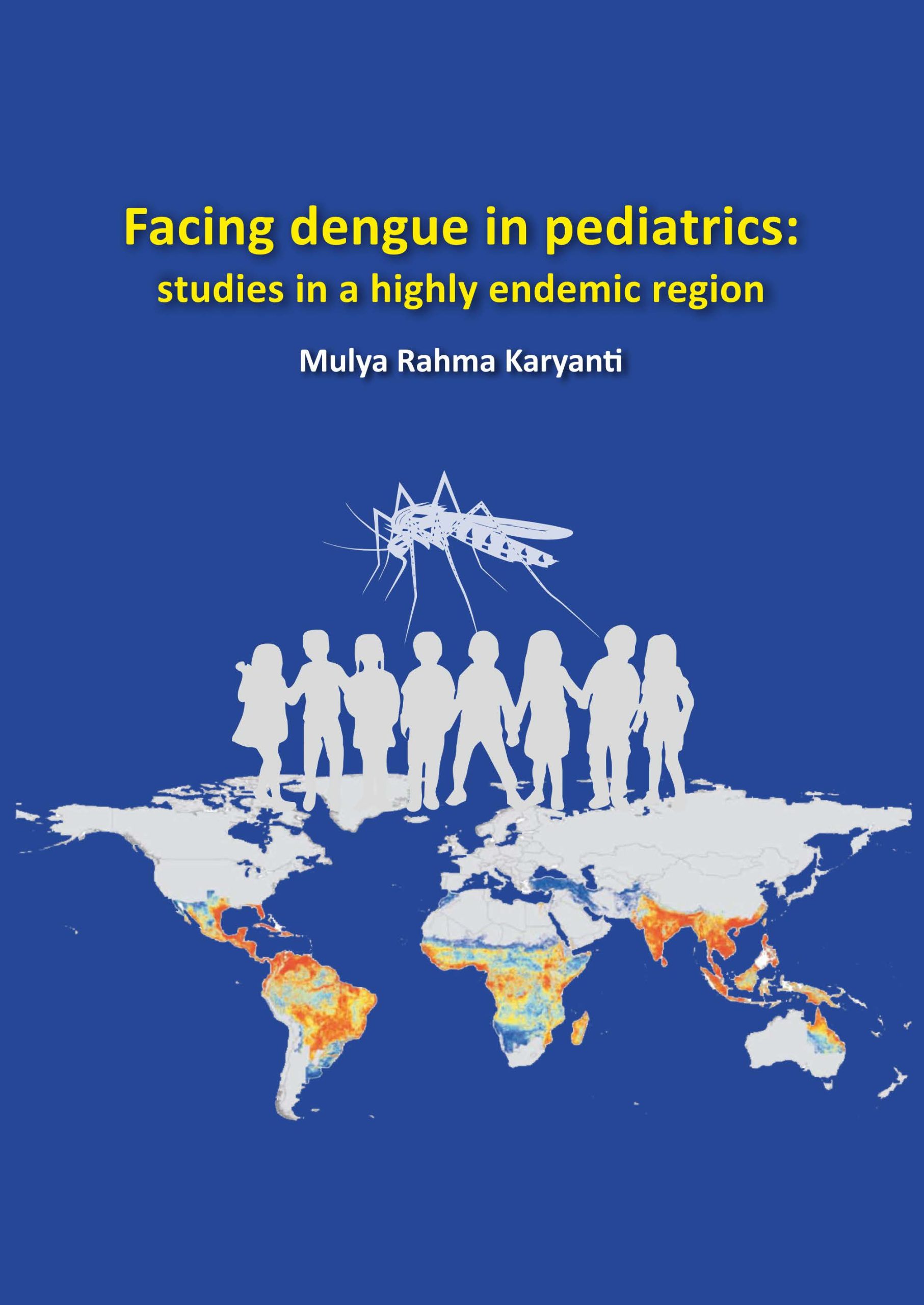Dengue fever remains a significant health problem as was shown by an increased incidence in Indonesia, an endemic region. At the same time, infection with the dengue virus appears to result in fewer deaths. According to Mulya Rahma Karyanti MD, who recently defended her PhD thesis at UMC Utrecht/Utrecht University, research efforts should be directed towards reducing the delay in diagnosis in children. Therefore, education on warning signs of dengue should be reinforced to increase awareness of dengue progression among the general population as well as healthcare providers.
Dengue fever is an important mosquito-borne viral disease in tropical and subtropical countries. The global burden of dengue has been rising for over 60 years, resulting each year in 50 million infections of which 500 thousand end up in hospital. Dengue virus (DENV) can be transmitted from human to human through the bite of DENV-carrying female Aedes mosquitoes. When a mosquito bites a person who has DENV in its blood, the mosquito can become infected with the virus and can later transmit the virus to other people. Dengue cannot be transmitted directly from one person to another. Infection may present a wide spectrum of clinical manifestations ranging from asymptomatic, mild simple febrile illness to severe dengue in the form of plasma leakage, dengue hemorrhagic fever (DHF) and dengue shock syndrome (DSS) that can result in death. Dengue infection mostly has a self-limiting non-severe clinical course, but a small proportion progresses to severe disease. The PhD project of pediatrician Mulya Rahma Karyanti MD (Julius Center for Health Sciences and Primary Care, UMC Utrecht and Cipto Mangunkusumo Hospital, Jakarta, Indonesia) aimed to better understand the clinical manifestations, epidemiology and long-term effects of dengue in children, with focus on the situation in Indonesia.
An overview of dengue epidemiology in Indonesia – based on an ongoing nationwide surveillance program of over 45 years – showed an increase in dengue infections since 1999 (with a shift from young children towards adolescents). This increase was attributed to increased awareness of physicians towards dengue infections, increased access to healthcare facilities, increased availibility of dengue diagnostics and increased awareness of the community to seek help to the healthcare centers. However, the mortality due to dengue DHF decreased considerably over time. Clinical and laboratory manifestations in children were mostly fever, petechiae, epistaxis, hepatomegaly, and thrombocytopenia. Encephalopathy and gastrointestinal bleeding were found only in DSS.
Subsequent study by Karyanti demonstrated that in a tertiary care hospital in Jakarta (Indonesia), in a cohort of 494 hospitalized children with clinically suspected dengue infection, 37 percent were classified as dengue fever, 32 percent as DHF and 31 percent as DSS. Of patients with dengue fever, 28 percent pressed to DHF or DSS and of DHF patients, 6 percent progressed to DSS. Only fever duration was significantly associated with clinical progression, suggesting that the disease course of dengue in children is predictable and stressing the importance of close clinical monitoring of patients.
Further study of the profile and clinical signs in infants with confirmed dengue in a 10-year period showed that strong indicators of DSS in infants were liver enlargement and fluid accumulation. Diarrhea and cough as atypical clinical presentations were found in one third of dengue in infants. The diagnostic value of warning signs in different age groups of children was also explored, to help clinicians facing dengue in endemic countries. Infants with the warning signs of liver enlargement and clinical fluid accumulation are more likely to progress to severe dengue, while in younger children and adolescents, the warning signs are firstly an increase in hematocrit with concurrent rapid decrease in platelet count, followed by abdominal pain, vomiting, or fluid accumulation.
A long-term follow-up study after 8.4 years of 28 pediatric patients with history of DHF carotid intima-media thickness (cIMT) and arterial stiffness were assessed during adolescence to detect preclinical atherosclerosis, comparing a post-DHF group and a control group. The result showed increased cIMT but no differences in arterial stiffness. On basis of these findings, Karyanti concluded that longer follow-up studies in this respect are warranted.
Mulya Rahma Karyanti MD (1969, Jakarta, Indonesia) defended her PhD thesis on February 26, 2024 at Utrecht University. The title of her thesis was “Facing dengue in pediatrics: studies in a highly endemic region”. Supervisors were prof. Arno Hoes MD PhD (Julius Center for Health Sciences and Primary Care, UMC Utrecht) and prof. Hans Heesterbeek PhD (Department of Population Health Sciences, Utrecht University). Co-supervisor was Patricia Bruijning-Verhagen MD PhD (Julius Center for Health Sciences and Primary Care, UMC Utrecht). Mulya Rahma Karyanti is the head of the Division of Infection and Tropical Diseases, Cipto Mangunkusumo Hospital, Jakarta, Indonesia.


